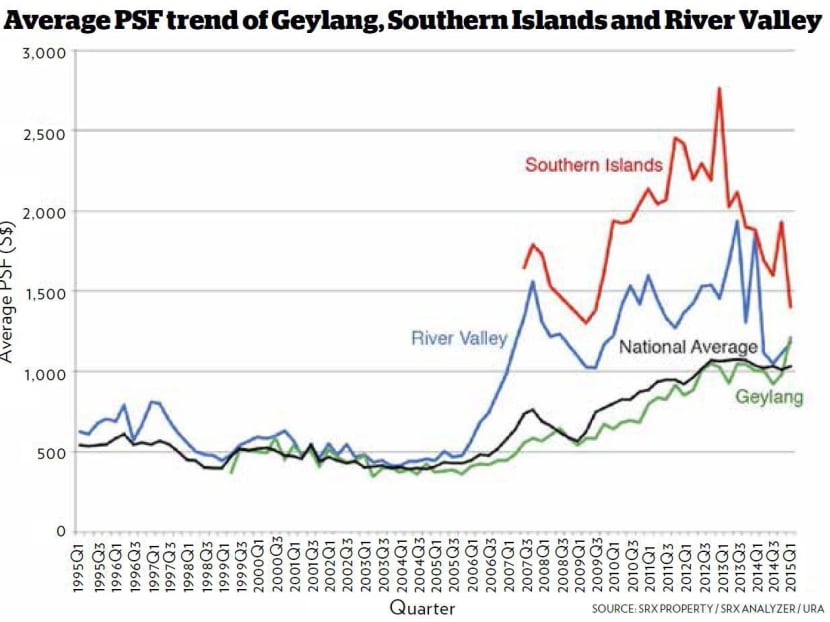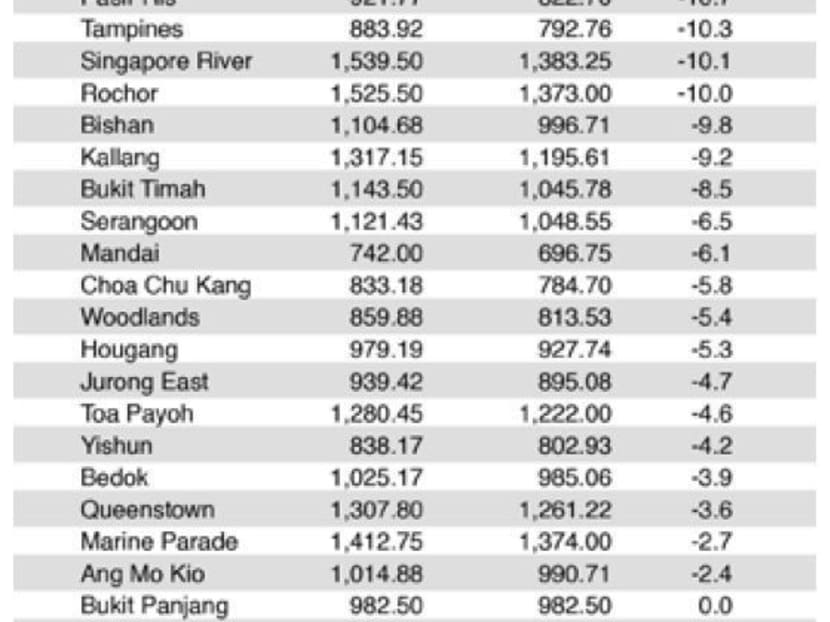Homeowners experience pain in Sentosa, joy in Geylang
Property is all about location, location, location. Therefore, what is happening at the national level is not necessarily what is happening in your neighbourhood.


Property is all about location, location, location. Therefore, what is happening at the national level is not necessarily what is happening in your neighbourhood.
So you cannot say that since the SRX Property Price Index is down 6.2 per cent from its peak in January last year, the price of your home is down 6.2 per cent.
Frequently-reported price indices such as those from SRX Property and the Urban Redevelopment Authority (URA) measure price changes of residential housing at the national level using sophisticated statistical methodology. They are great for measuring the overall performance of a large market segment like HDB flats or private apartments.
The indices are also good indicators of the general mood of the market. When the market is moving upwards, people are generally optimistic and, as a result, they bid up overall prices.
When the market is moving downwards, homeowners are generally pessimistic and are reluctant to put their homes on the market while buyers are looking for bargains.
While the indices provide market participants with broad-based information, the real money is made by understanding the price variations and trends at different levels of the market. Smart homeowners and investors track what is happening at the regional, district, planning region, neighbourhood, project and unit level. By doing so, they obtain sufficient visibility on the market to make buying, selling and renting decisions.
For example, according to SRX Property data, the highest average per square foot (psf) price for private resale apartments was S$1,113 in December 2012. Since then, the average psf has declined 6.2 per cent to S$1,044.
At the same time, apartments in the Southern Islands planning region, which includes Sentosa, have seen their average psf price plummet 49.1 per cent from a peak of S$2,757 to S$1,404. Meanwhile, the average psf price in River Valley has dropped 39.1 per cent from a peak of S$1,937 to S$1,180 psf.
If you own a home in River Valley, does this mean your psf price has declined 39.1 per cent?
No. It just means the average psf has dropped. Within River Valley, at the street and unit level, some homes have done worse while others have done better. If you are a buyer or investor, knowing this — that the average psf in River Valley has dropped significantly — might prompt you to start sniffing around the area for bargains.
Geylang, on the other hand, is one area where bargains will be hard to come by. The average psf price is at a peak for the region of S$1,211. Does this mean you should not be looking at Geylang? No and yes. No, if you think Geylang has peaked. Yes, if you believe there is upside potential for the particular apartment building and unit you are considering in Geylang or other planning regions.
You can make this determination by evaluating price trends at the neighbourhood and street levels and obtaining an X-Value for each unit.
ABOUT THE AUTHOR: Sam Baker is co-founder of SRX Property, an information exchange formed by leading real estate agencies in Singapore to disseminate market pricing information and facilitate property listings and transactions. To find the average PSF for your planning region or X-Value for your unit, visit SRX.com.sg/research.





